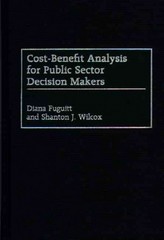Question
On January 1, 2016, ParentCo acquired a 100% of the voting stock of SubCo using 900,000 shares of ParentCo Stock, valued at $25 per share.
On January 1, 2016, ParentCo acquired a 100% of the voting stock of SubCo using 900,000 shares of ParentCo Stock, valued at $25 per share. Professional fees connected to the acquisition were $900,000 and costs of registering and issuing the new shares were $550,000, both paid in cash. SubCo performs vehicle maintenance service for owners of auto, truck and bus fleets. SubCo's balance sheet at acquisition date was as follow:
Cash 500,000
Account receivables 2,100,000
Inventory 6,400,000
Equipment 16,900,000
Total Assets 25,900,000
Current Liabilities 4,200,000
Long-term Liabilities 6,900,000
Common Stocks 2,000,000
Additional Paid in Capital 3,900,000
Retained Earnings 8,900,000
Total Liabilities and Equity 25,900,000
In reviewing SubCo's assets and liabilities at the acquisition date, ParentCo determined the following:
On a discounted present value basis, the accounts receivables had a fair value of $2,400,000, and the long-term liabilities have a fair value of $7,000,000 with maturity of 20 years.
The replacement cost of the inventory was $7,000,000.
The turnover of short-term assets and liabilities is less than one year.
The current replacement cost of the equipment was $18,000,000. The equipment had a 16-year remaining useful life.
SubCo had long-term service contracts with several large fleet owners. These contracts have been profitable; the present value of expected profits over the remaining term (10 years) of the contracts is estimated at $1,200,000. These contracts meet the criteria for recognition separately.
SubCo had a skilled and experience assembled workforce. ParentCo estimated that the cost to hire and train replacements would be $960,000.
SubCo's trade name is well-known among fleet owners and is estimated to have a fair value of $90,000. The estimated remaining life was 3 years.
Following are selected accounts for ParentCo and SubCo as of December 31, 2020 (credit balances indicated by parentheses). Several assets and liabilities accounts have been omitted.
Account
ParentCo
SubCo
Income Statement
Revenues ($6,500,000) ($7,230,000)
Cost of Service $3,500,000 $3,150,000
Depreciation $500,000 $1,500,000
Amortization $350,000
Interest Expenses $1,250,500 $400,000
Equity in SubCo's income ? $0
Net Income ? ($2,180,000)
Statement of Retained Earnings
Retained earnings 1/1/2020 ($14,700,000) ($12,985,000)
Net Income (above) ? ($2,180,000)
Dividend paid $520,000 $275,000
Retained earnings 12/31/2020 ? ($14,890,000)
Balance Sheet
Cash $3,480,000 $710,000
Account Receivable $1,520,000 $1,500,000
Part inventory $2,900,000 $3,800,000
Equipment (net) $9,000,000 $6,600,000
Building $14,500,000 $5,000,000
Investment in SubCo ?
Total Assets
Current Liabilities ($5,600,000) ($1,500,000)
LT Liabilities ($2,950,000) ($5,150,000)
Common Stock ($4,150,000) ($2,000,000)
Additional paid in capital ($5,830,000) ($3,900,000)
Retained earnings 12/31/2020 ? ($14,890,000)
Total liabilities and equities
SubCo reported the following figures for years preceding 2020:
2016 2017 2018 2019 2020
Net Income $900,000 $1,560,000 $1,400,000 $1,300,000 $2,180,000
Dividend $170,000 $220,000 $415,000 $270,000 $275,000
ParentCo uses the Equity method to account for the investment account.
SubCo has not issued or repurchased stocks in the past 5 years.
Required:
Prepare the ECOBV amortization schedule. How much is the ECOBV adjustment for each of the five years? (5 points)
Fill in the missing values in the financials statements of ParentCo. (10 points)
Prepare Consolidation Worksheet for the selected accounts of ParentCo and SubCo (i.e. consolidation adjustment entries and consolidated totals). (15 points)
Step by Step Solution
There are 3 Steps involved in it
Step: 1

Get Instant Access to Expert-Tailored Solutions
See step-by-step solutions with expert insights and AI powered tools for academic success
Step: 2

Step: 3

Ace Your Homework with AI
Get the answers you need in no time with our AI-driven, step-by-step assistance
Get Started


